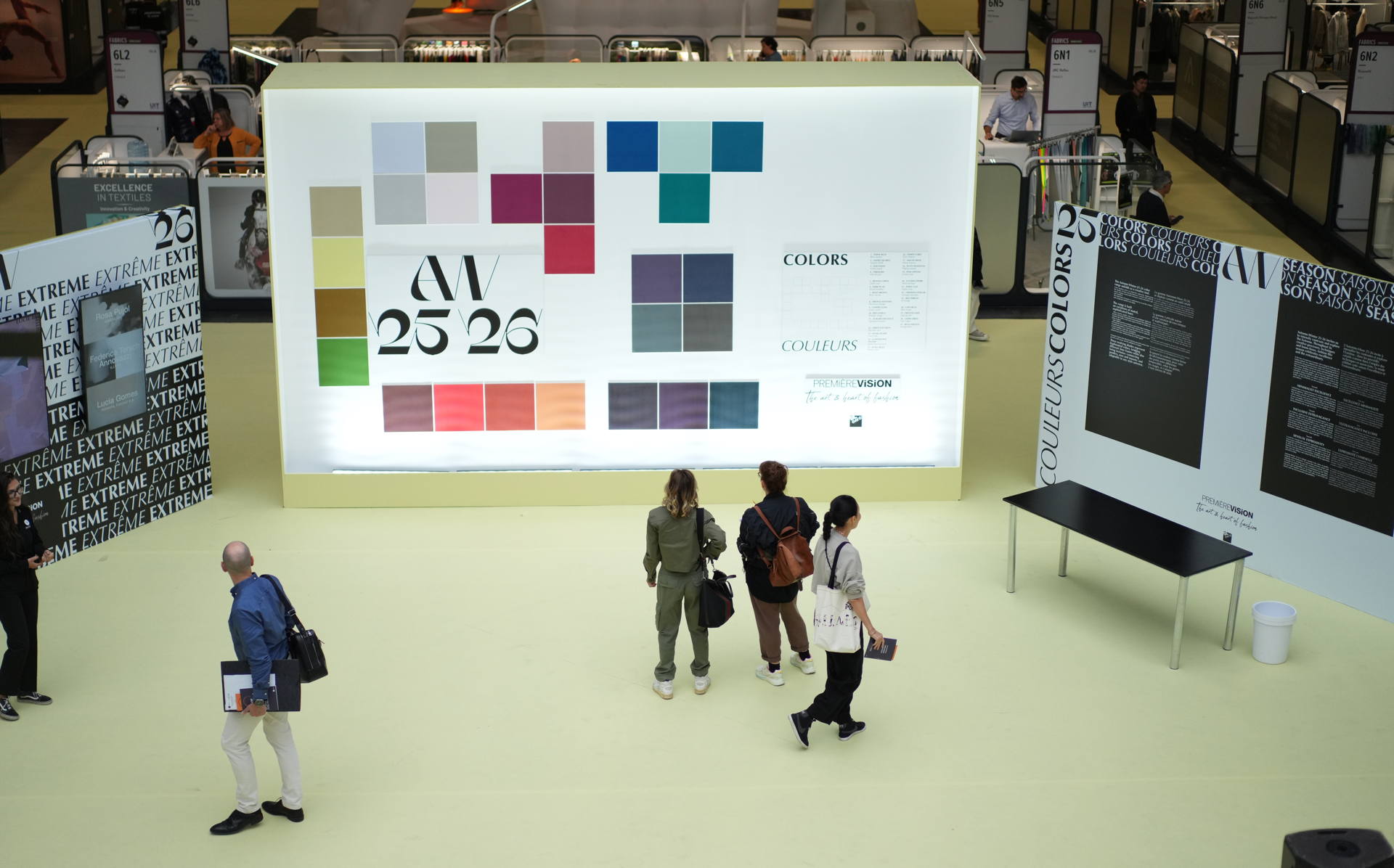
Premiere Vision Paris focuses on durability and recyclability, from textile to textile
How is Premiere Vision responding to market dynamics and buyer demands? Leading the path to sustainability. While the organisers are talking about announcing changes next September, the exhibition developes focusing on durability and recyclability from textile to textile in closed loop, contributing to environmental conservation. We can expect to see even greater strides in the development of textiles that are both high-performing and eco-friendly. Get to know them.
No more sustainable, but eco-responsible
The textile industry is experiencing a significant transformation as brands continuously seek to enhance the quality and resistance of fabrics. This drive towards innovation is fueled by the need to balance performance with sustainability, particularly in the context of synthetic materials.
During this edition of Premiere Vision Paris, the ‘a better way’ programme was extended to 312 exhibitors to analyze responsible initiatives; the Smart Creation sector welcomed 36 companies; the deadstocks had a brand new space; and there were a lot of information on eco-responsibility through dedicated conferences and the decoding of eco-responsible criteria for all materials highlighted on the forums.
There were also speeches from representatives of French and European institutions: the European textile confederation Euratex, represented by its new president Mario Jorge Machado, presented its roadmap for meeting the challenges facing European textile companies. The Union des Industries Textiles and its 32 exhibitor members reaffirmed the central role France plays in the creation and production of materials.
Below, we explore the latest developments in high resistance fibers, traceability, synthetics based on renewable resources, regenerative cottons, alternative natural fake fur and sophisticated recycling processes, which are setting new standards in the industry.
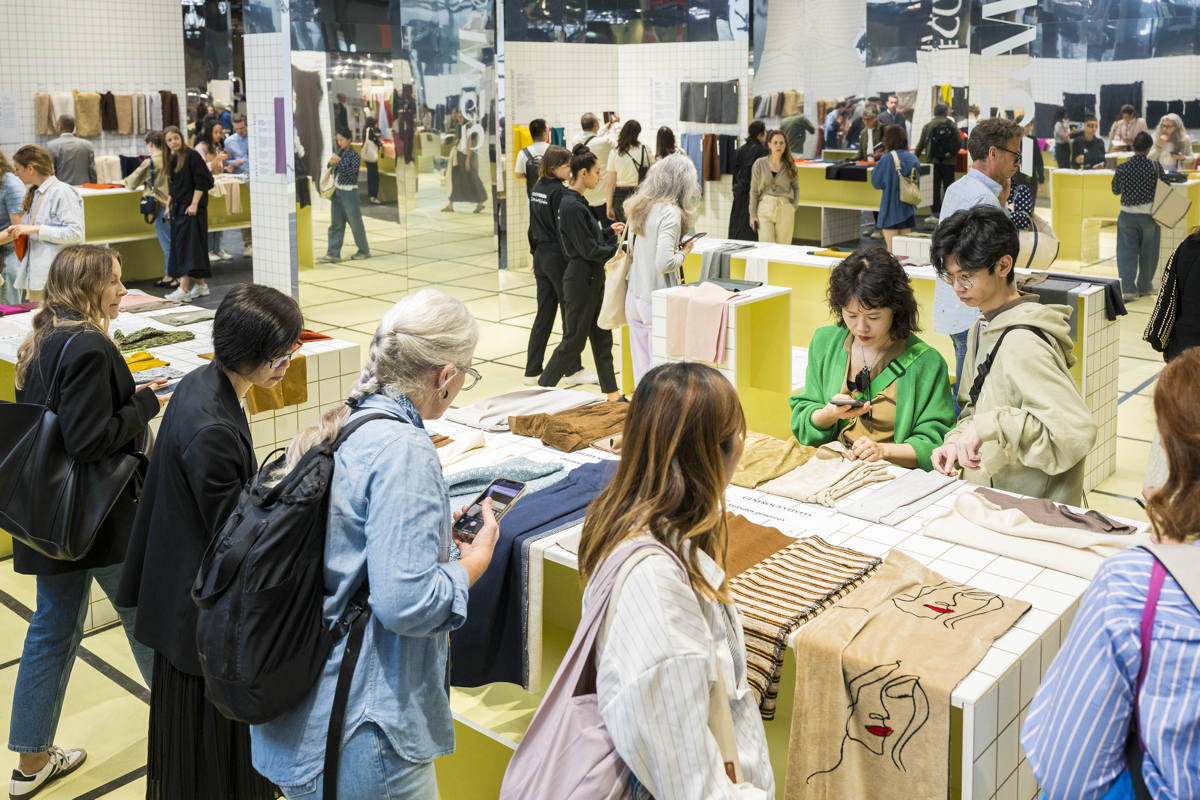
REGENERATIVE COTTONS
Regenerative agriculture developed for cottons, aims to go further than reducing negative impacts. Thanks to these practices, we can store carbon in the soil, restore soil fertility, improve water retention and conserve biodiversity. The soil-regeneration techniques include the absence of ploughing and synthetic chemical inputs, as well as the implementation of crop rotation and cover crops, providing more nutrients in the soil. Who is leading the trend here?
- Good Earth Cotton® is a programme that regenerates natural ecosystems while optimising efficient natural resource use; it draws on cutting-edge tools and the use of solar and renewable energy.
- Fibre traceability is ensured via the optical labels provided by Fibre Trace®, which are incorporated into the ginning and are resistant to the material’s various transformations.
- Materra‘s approach is based on a scientific assessment of the results of agricultural practices; its aim is to minimise both the footprint on soils and water use, while maximising yields. Their fibre qualities can target optimal sustainability.
- The Regenagri programme helps people to learn new practices, sets up procedures and monitoring, and ensures third-party assessment and verification of the effectiveness of actions taken to guarantee continuous improvement and regeneration.
HIGH RESISTANCE, the “must” for innovative textiles and fabrics
The quality and resistance of fabrics is an area of continuous improvement for brands requiring synthetic materials for their products. While the trend is to reduce the use of fossil fuels, it is undeniable that certain applications require synthetic materials for their strength, water repellency, or combined lightness and breathability. So it is essential to seek out the most resistant materials to create fabrics that can stand the test of time and use.
- Textured polyamide 6.6 threads are mainly used for waterproof outdoor clothing, lingerie and linings.
- Short-fibre polyamides are blended with cotton, wool or any other fibre to provide solidity, tensile strength and rub-resistance.
- 100% polyamide compositions can be recycled using thermomechanical or chemical processes: a distinct advantage.
Two fibres stand out for their resistance:
- CORDURA® has three times the tensile strength and rub-resistance of conventional polyamide, and is a featherweight material that dries quickly. It is now also available in a recycled version, Cordura re/cor™ RN66, developed from 100% polyamide production waste transformed into high-quality yarns.
- KEVLAR® is an aramid fibre, five times stronger than standard polyamide. Capable of withstanding heat of up to 300°, it is widely used for protective clothing.

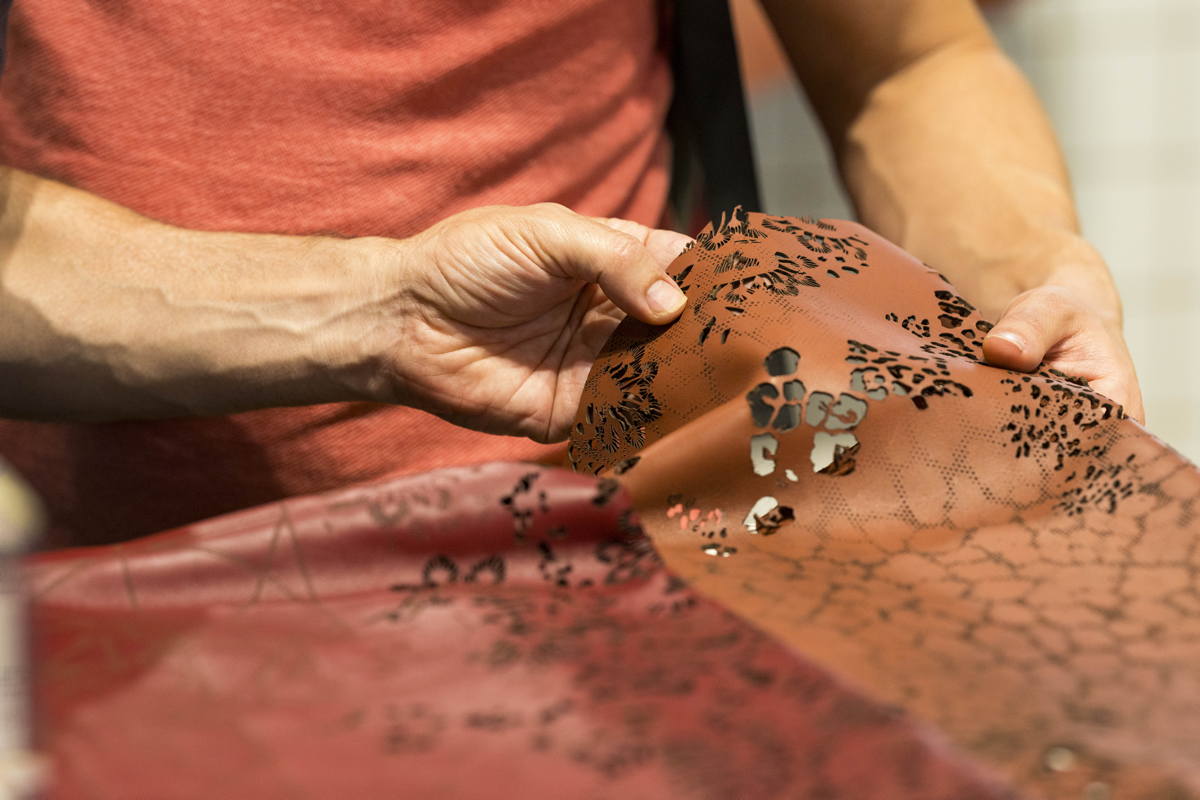

RECYCLING SYNTHETICS PRE AND POST- CONSUMPTION
Most recycled polyester is recycled in open circuit, using PET bottles or fishing nets. The aim is to be able to develop all kinds of recycled synthetics, by recycling from textile to textile in closed loop, to reduce existing synthetic textile stocks, whether pre-consumption waste, such as offcuts, or post-consumption waste, such as used clothing. The main recycled synthetics nowadays are:
- SEAQUAL® is a polyester recycled using mechanical procedures, composed of 10% marine litter, collected as part of the Seaqual Initiative, and 90% post-consumption GRS-certified PET. The Seaqual threads contain a DNA tracer, which guarantees the presence of marine plastic collected by the Seaqual Initiative.
- REPREVE® is a range of mechanically recycled fibres, polyesters and polyamides, developed from plastic bottles.
- ECONYL is a regenerated polyamide made from recycled fishing nets, through a process combining mechanical and chemical recycling, able to obtain the initial properties of the polymer, so it can be recycled several times.
- NEW LIFET™ is a traceable recycled polyester filament, obtained through the mechanical recycling of PET bottles, with no chemical addition.
- Q-NOVA® is a mechanically recycled polyamide, with no chemical addition, made from more than 50% of pre-consumption waste.
- TEX2TEX™ is a closed circuit 100% recycled polyester, textile to textile, with cotton feel. A thermomechanical process improves the quality of the fibre.
ALTERNATIVE COLOUR
There are now a variety of options to develop lower-impact coloured products.
- Using the natural colours of animal hair and plant fibres, in their range of white, greys and browns, we found specific cotton varieties, growing in pink, browns and greens, developed without bleaching or dyeing, and maintaining their original shade over time.
- We also found a new generation of pigment dye, without rinsing. Colour palette up to dark colours, with very good colour fastness.
- There were a new plant-based dying processes using fruits, flowers, plants or agri-food vegetable residues to dye, without the use of toxic mordants, in a wide range of colours that stand the test of time and use.
The Colorifix technology is based on microbiology and on replicating DNA as it is found in nature in order to produce pigments. The fermentation of agricultural by-products can be used to create colorants thanks to the action of micro-organisms whose DNA contains enzymatic colour catalysts.
The Pigmentura by CHT is a new generation of pigment dyes, processed without washing or rinsing, can be used to obtain a wide range of shades, including fluorescent colours.

ALTERNATIVE STRETCH MATERIALS
Elasticity can be obtained either with elastane that has been recycled or made from renewable resources, intrinsically designed to stretch, or with the mechanical performances of certain threads, weaves, or fibres. Here we see 3 trends.
- There is a new generation of elastane. Recycled elastane can contain up to 60% of recycled production waste.
- Bio-sourced elastane is formulated with a proportion of bio-sourced content, particularly corn or castor oil.
- Biodegradable elastane, like Roica ™™ V550, is an innovation designed to decompose more quickly than its conventional equivalents without leaving harmful substances in the environment.
- Stretchy acetate. A combination of Naia™, acetate from sustainably managed forests produced in a closed loop process, and Sorona, a PLA containing 37% maize or sugar cane that makes the material stretchy.
2. New threads and weaves. Natural elasticity of wools thanks to the curly nature of their fibre provides excellent bounce in the fabric. We are talking about stretch quality in twisted spun cottons. Several threads are twisted together to provide strength and elasticity.
- Crepe threads, made from very high torsion.
- Crepe weaves have a specific weave which creates an irregular effect and great elasticity.
3. Specific features of polyesters: Polyester has good elasticity. Its recycled version can thus provide an alternative to elastane to add comfort to eco-responsible fabrics.
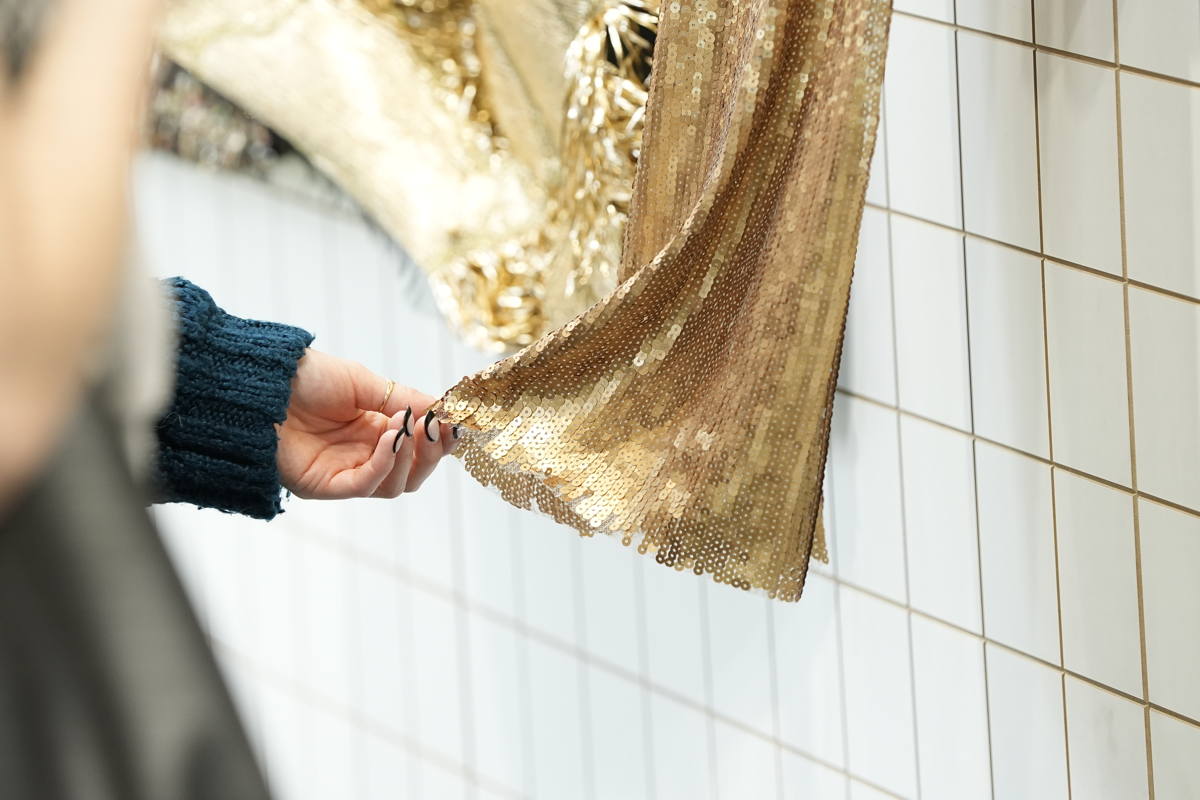
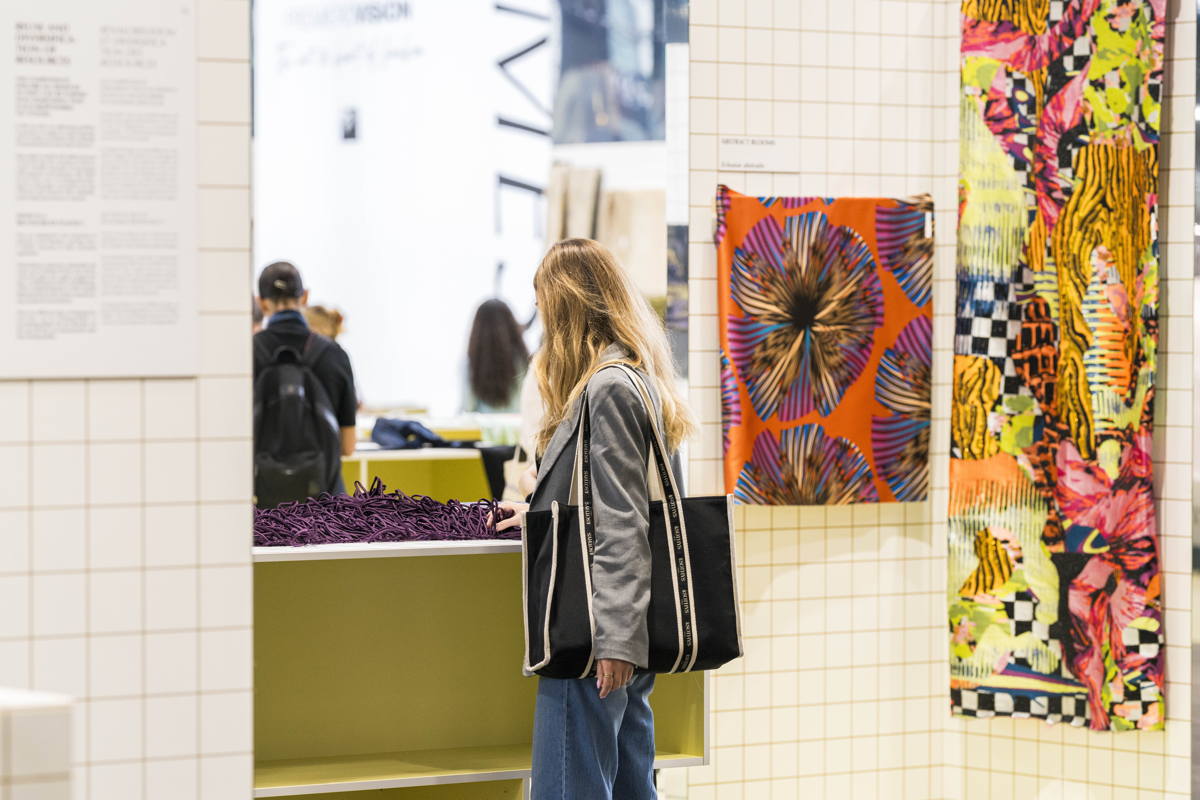
NATURAL FAKE FUR
Fake furs are developed on specific looms. The long fibres forming the fur are inserted into a base called the “floor”. This floor may be knitted, most frequently, or woven. The aim is to obtain the same volume and softness of an animal fur, through the various mechanical finishes undertaken to give it its appearance.
Although it does remove issues of animal welfare, fake fur remains problematic as it is most frequently made from synthetic materials produced from fossil fuel resources. The fur intertwined with the floor tends to escape over time, and runs the risk of releasing plastic microparticles.
Consequently, the composition of the fur is essential to measure the environmental impact it may represent. Developments are now focusing on fur made from plant-based materials, like cotton, linen, hemp or ramie. Wool is also getting in on the act, with brushed sheets to replicate the fur. Hemp, Ramie, BioFluff, BioFluff, Mohair and alternative Sheepskin are names that we will hear from now talking about fake fur.
Words:
Belvis Soler
All Images:
@ Courtesy by Premiere Vision Paris






